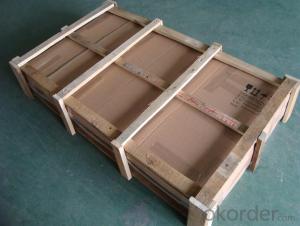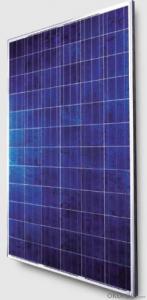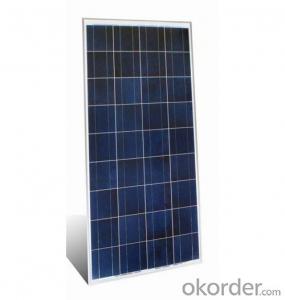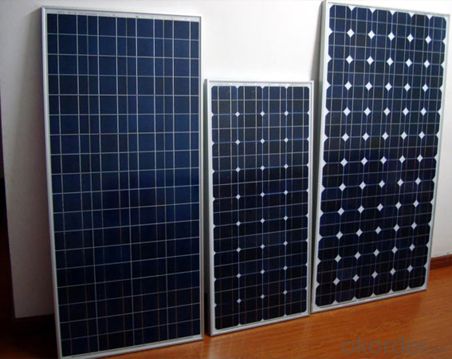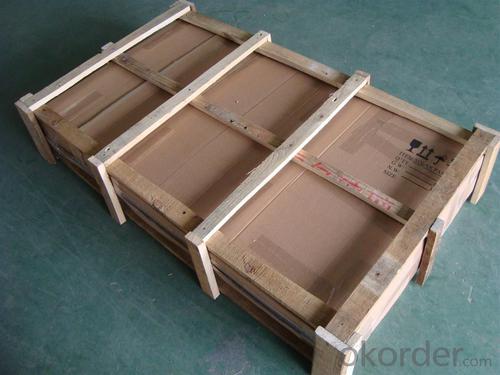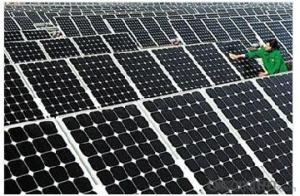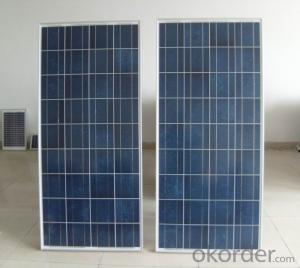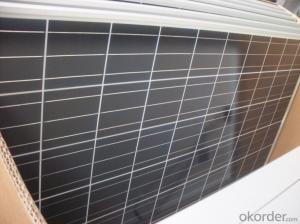CNBM 260W Solar Panels Made in China - Solar Panels McKinney
- Loading Port:
- Guangzhou
- Payment Terms:
- TT OR LC
- Min Order Qty:
- 26 pc
- Supply Capability:
- 100000 pc/month
OKorder Service Pledge
OKorder Financial Service
You Might Also Like
Characteristics of Polycrystalline Solar Panel
I Solar Cell : High efficiency crystalline solar cell. Even if under the weak light, the solar module can produce maximum power output.
II Tempered glass (toughened glass): Anti-reflecting coating and high transmission rate glass increase the power output and mechanical strength of solar module.
III EVA and TPT: Using high quality EVA and TPT to prevent destroying and water.
IV AI frame: Without screw, corner connection. 6 holes on the frame can be installed easily.
V Junction box: Multi function junction box with water proof.
VI Long lifetime: ≥25 years; Less power decrease.
VII Good performance of preventing from atrocious weather such as wind and hails.
VIII Resisting moisture and etching effectively, not effected by geology. .
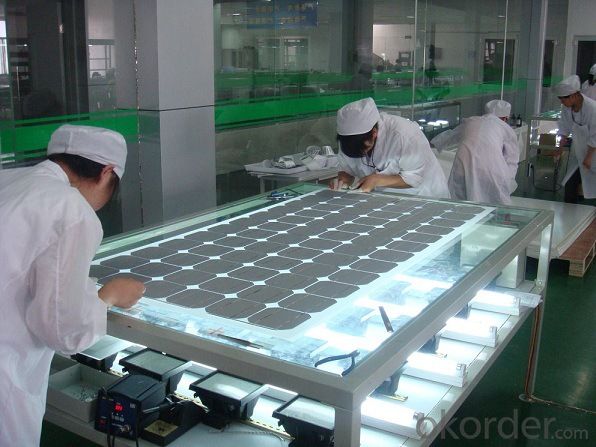
Standard Test Conditions of Polycrystalline Solar Panel
The opto-electrical specifications shown below are stabilized values being measured at Standard Test Conditions of multicrystalline silicon Solar Panel, Irradiance: 1000W/m2, Spectrum: AM1.5 at 25°C, The info below is subject to manufacturing tolerances. Where appropriate minutes of measurement are available and are used for the dimensioning of the installation.
Currently,We have 250w-300w solar panel stocks in Both West and East Coasts made in Vietnam,India,Korea,Malaysia and Japan.Meanwhile,we also arrange production line in Wisconsin,USA.If you're interested,please contact us soon.
Thanks for your time.
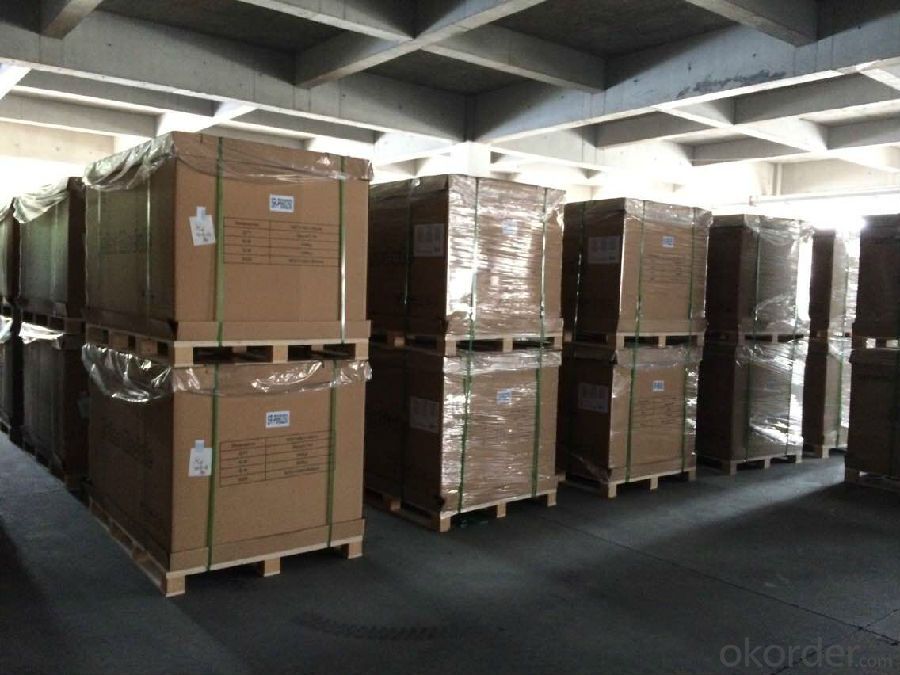

- Q: Can solar panels be used during a power outage?
- No, solar panels cannot be used during a power outage unless there is a battery backup system in place.
- Q: Can solar panels be installed on a pergola or shade structure?
- Yes, solar panels can be installed on a pergola or shade structure. In fact, installing solar panels on a pergola or shade structure can provide both shade and renewable energy generation, making it a practical and efficient solution for maximizing space and reducing energy costs.
- Q: Can solar panels be used in areas with high levels of dust or sandstorms?
- Yes, solar panels can be used in areas with high levels of dust or sandstorms. However, frequent and heavy exposure to dust or sand can reduce their efficiency over time. Regular cleaning and maintenance are necessary to ensure optimal performance in such areas. Additionally, advanced solar panel designs and coatings are being developed to mitigate the impact of dust and sand accumulation, making them more suitable for use in these challenging environments.
- Q: i see these things all over the internet on how to make 'home made solar panels' but all of them require you to buy the solar cells and nothing tells you how to make your own. So how can you make your own solar cells?
- I don't have an idea but would surely refer you to a website where you would surely find information on solar cells and many more alternative energy questions.
- Q: what is one benifit in a solar panel?
- Solar panels can be used for main grid connection, remote power with batteries, remote solar lighting, on vehicles or boats. Solar panels have a life of up to 30 years. The energy used to make a solar panel is recovered and solar panels can even make an income. Green power can be sold back to the grid at premium prices in some places around the world.
- Q: Can solar panels be used to power a film set?
- Yes, solar panels can be used to power a film set. Solar panels convert sunlight into electricity, which can be used to power various equipment and lighting on a film set. This renewable energy source offers a sustainable and environmentally friendly alternative to traditional power sources.
- Q: Can solar panels be used in off-grid systems?
- Yes, solar panels can definitely be used in off-grid systems. In fact, they are a popular and reliable choice for generating electricity in remote locations where access to the traditional power grid is limited or non-existent. Off-grid solar systems store excess energy in batteries, ensuring a continuous power supply even during periods of low sunlight.
- Q: Im doing a science project and I need to know what gases or liquids a solar panel can make that is not friendly to the environment. Please name all the gases and liquids and explain how they damage the environment. It would be most likely that you will get best answer if you find all the bad things about solar energy and explain why they are bad and how they affect nature. that would be helpful to. Thank you
- i think that there should not be gases produced from solar panel,that we use.
- Q: I have an off-grid 24volt existing system using 8 x 80 watt 2volt, wired at 24volts, mono solar panels with deep cycle batteries,operating now. I have been given a 240 2volt polly cryst. panel. Can I add this panel to existing panels as above. Thank you, dumb solar man
- Assuming that you have / will upgrade wiring sizes to carry the extra wattage, that the new total wattage resulting from the addition doesn't overload any existing charge controller, diodes and / or inverter you have installed, then paralleling it straight into one of the other 2 volt groups should do nothing but add current to the system. True, it will be somewhat imbalanced, but it will work. Your other options would be to reconfigure everything down to it's native 2 V configuration which will raise current and lower voltage, with the additional panel creating the additional current to raise the wattage or to put it in series with the other 4 panel clusters so that you would get 36 V and additional current to account for the raised wattage. One last approach might be to set it up on another battery bank of it's own (small and at 2 V) to then connect to the same inverter. You'd be getting more power and storage capability that way, sort of a partial backup system, really, that will take some of the load off the other components to help extend their useful lives and get a bit more flexibility into it as well. The choice is yours here. That is all the ways that the system can be connected in, assuming everything in the first sentence checks out;-) It's difficult to make a recommendation without knowing what other components are in use and what the maximum ratings they carry are. Just remember that parallel connections add current and voltage stays the same, series connections add voltage and the current remains the same and you can figure out what to do with this thing to help you if you stay within maximum ratings for the charge controller, diodes and / or inverter involved. Good luck and stay safe!
Send your message to us
CNBM 260W Solar Panels Made in China - Solar Panels McKinney
- Loading Port:
- Guangzhou
- Payment Terms:
- TT OR LC
- Min Order Qty:
- 26 pc
- Supply Capability:
- 100000 pc/month
OKorder Service Pledge
OKorder Financial Service
Similar products
Hot products
Hot Searches

